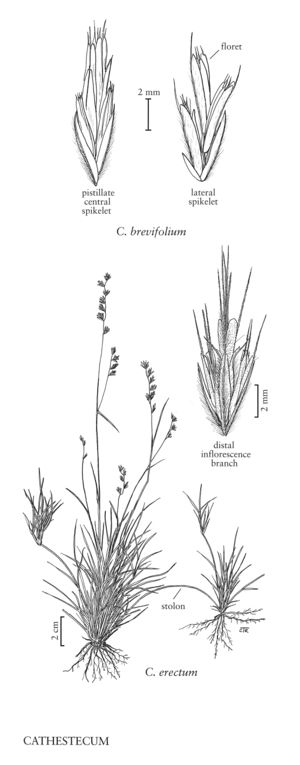Difference between revisions of "Cathestecum erectum"
FNA>Volume Importer |
FNA>Volume Importer |
||
| Line 17: | Line 17: | ||
-->{{Treatment/Body | -->{{Treatment/Body | ||
|distribution=Ariz.;Tex. | |distribution=Ariz.;Tex. | ||
| − | |discussion=<p>Cathestecum erectum grows on dry hills in the Great Bend region of western Texas and in northern Mexico.</p> | + | |discussion=<p><i>Cathestecum erectum</i> grows on dry hills in the Great Bend region of western Texas and in northern Mexico.</p> |
|tables= | |tables= | ||
|references= | |references= | ||
| Line 26: | Line 26: | ||
-->{{#Taxon: | -->{{#Taxon: | ||
name=Cathestecum erectum | name=Cathestecum erectum | ||
| − | |||
|authority=Vasey & Hack. | |authority=Vasey & Hack. | ||
|rank=species | |rank=species | ||
| Line 33: | Line 32: | ||
|basionyms= | |basionyms= | ||
|family=Poaceae | |family=Poaceae | ||
| − | |illustrator=Linda A. Vorobik | + | |illustrator=Linda A. Vorobik;Cindy Roché |
| + | |illustration copyright=Utah State University | ||
|distribution=Ariz.;Tex. | |distribution=Ariz.;Tex. | ||
|reference=None | |reference=None | ||
| Line 39: | Line 39: | ||
|publication year= | |publication year= | ||
|special status= | |special status= | ||
| − | |source xml=https:// | + | |source xml=https://jpend@bitbucket.org/aafc-mbb/fna-data-curation.git/src/f50eec43f223ca0e34566be0b046453a0960e173/coarse_grained_fna_xml/V25/V25_909.xml |
|subfamily=Poaceae subfam. Chloridoideae | |subfamily=Poaceae subfam. Chloridoideae | ||
|tribe=Poaceae tribe Cynodonteae | |tribe=Poaceae tribe Cynodonteae | ||
Revision as of 20:38, 16 December 2019
Plants perennial; polygamous; cespitose, forming dense, small clumps, stoloniferous, stolons thin, internodes 15-40 cm, strongly arching. Culms 10-30 cm, erect or geniculate, glabrous. Leaves primarily basal; lower sheaths overlapping, densely villous basally, throats pilose; upper sheaths not overlapping, glabrous; ligules about 0.3 mm; blades 3-12 cm long, 1-1.5 mm wide, involute or flat, glabrous abaxially, scabrous and sparsely pilose adaxially, hairs to 2 mm. Panicles with 5-7 branches; branches about 5 mm, dimorphic, staminate or bisexual, the 2 forms sometimes on different plants, sometimes mixed within a panicle, spikelets of 1 form all staminate, bisexual form with pistillate (sometimes bisexual) central spikelets and well-developed staminate or sterile lateral spikelets, spikelets frequently pale green. Staminate branches: all spikelets similar; lower glumes about 1 mm; upper glumes glabrous or almost so, those of the lateral spikelets about 3 mm, those of the central spikelets about 4 mm; lemmas similar, about 3 mm, glabrous, irregularly lobed, unawned, sometimes mucronate. Bisexual branches: glumes villous; lateral spikelets with staminate or sterile florets; lemmas of lateral spikelets about 3 mm, glabrous or sparsely pubescent, irregularly lobed, awned from the sinuses, awns hispid, equaling or occasionally exceeding the lobes; anthers 1.7-2.3 mm; central spikelets with the lowest floret pistillate, distal florets staminate or sterile; lowest lemmas glabrous or sparsely pubescent, lobed, lobes about 1/3 as long as the lemmas, awned from the sinuses, awns glabrous, subequal to the lobes or the central awns slightly longer; distal florets similar to those of the lateral florets, awns 1-2 mm longer than the lobes. 2n = 20.
Discussion
Cathestecum erectum grows on dry hills in the Great Bend region of western Texas and in northern Mexico.
Selected References
None.
